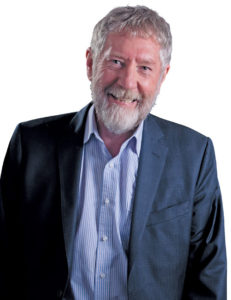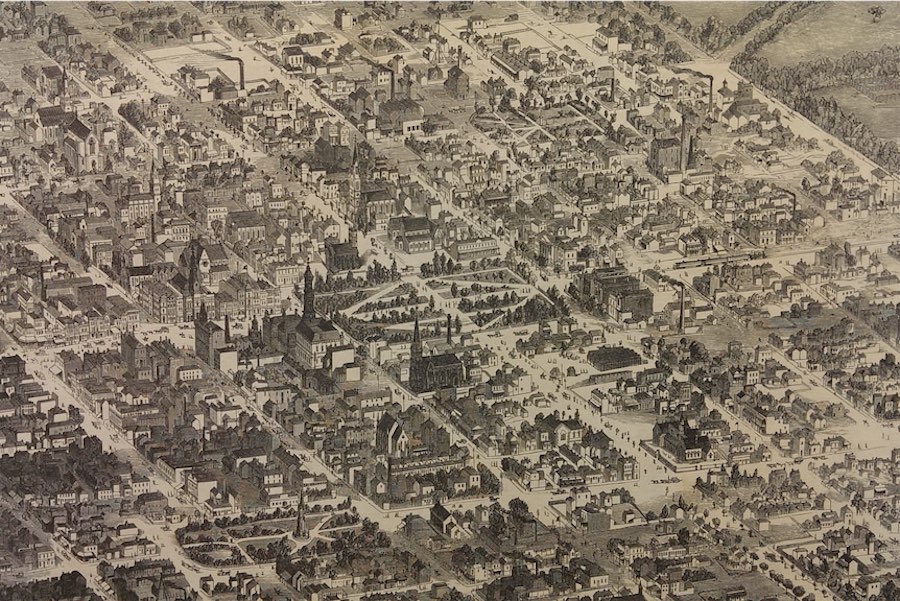
Cramped living conditions were a key element in the spread of tuberculosis in Adelaide in the 1880s. The solution was creating outdoor recreation areas and better designed houses with yards. The covid pandemic should have us thinking the same way, says MICHAEL MOORE.
HOW many problems are driven by economic growth? Who are the winners and who are the losers?

As the divide between the wealthy and the poor grows year after year, it’s appropriate to peel back the layers to look at “the cause of the cause”.
Economic growth is a catchword of conservatives as the solution to a wealthy and more prosperous country. One key element driving economic growth in Australia has been population growth that, in turn, creates more and more jobs and pumps the need for more and more workers.
As more people arrive in Australia more work is created, and with it more and more wealth for individuals and companies along with increased revenue for governments.
The community is largely caught in an exponential drive for more jobs, more housing, more wealth – a drive for economic growth.
A paradigm shift is needed to frame our future in terms of economic sustainability.
Population predictions by the ANU School of Demography recently predicted a 40 per cent rise in Canberra from the current 432,000 people to 700,000 people within four decades. This is built “largely on the back of immigration”. Apartment builder Geocon managing director, Nick Georgalis, considers this a serious underestimate.
Advertising of high-rise apartments by Geocon and other developers in Canberra indicates apartment sales are slow. The flipside is that the prices of free-standing houses have increased remarkably over the last year.
There is a binary debate between those who are concerned about the impact of “urban sprawl” on the environment and those who are concerned about the impact on health of the population from the ever increasing number of apartment towers.
Concern about intensive living is not new. Such concerns have been exacerbated by the advent of COVID-19 and the challenges of apartment living. The Condamine Court quarantine provides one recent example of serious inconvenience to those living in the apartments compared to the broader lockdown of the rest of the community.
Sarah Scopelianos, on ABC Radio National, explored the impact of the spread of tuberculosis in the early stages of town planning in Adelaide. South Australians are very proud, as are Canberrans, that from the initial conception their cities have been carefully planned. With around one death from tuberculosis for every thousand people between 1885 and 1889, town planners looked for the cause and the solution.

Cramped living conditions were identified as a key element in the spread of the disease. A change in medical thinking sought to move people from cramped, dark and dusty rooms to open, airy spaces. Effectively, the medical advice was to stop sharing and inhaling foul air and find open air, good hygiene and appropriate exercise.
According to Dr Julie Collins, an architectural historian from the University of SA, the planners of the time became “crusaders” for flattening slums, for creating community inspired suburbs with outdoor recreation areas and for better designed houses with yards for some outdoor living. The current pandemic ought to have us thinking in the same way.
More green space, homes with some yard space, better suburbs with managed or less urban sprawl appear impossible in Canberra if even the minimum predictions on population growth become a reality. This is why it is time to rethink some fundamentals. Population growth is being driven by the desire for economic growth and is undermining the drive for healthier living spaces.
According to the Productivity Commission in May 2013, “economic sustainability can be interpreted as the allocation of resources over time (savings and investment) in a way that provides the highest level of wellbeing for current and future generations”.
Debates around sustainable populations, sustainable environment and sustainable development have been on the table for years. However, it is rare to hear of major political parties setting out to achieve these goals through economic sustainability.
The political and policy challenge is to prioritise health and well-being over consumption. Perhaps one positive impact of this awful pandemic is to rethink what is really important for us, for our children and their children’s children.
Michael Moore is a former member of the ACT Legislative Assembly and an independent minister for health. He has been a political columnist with “CityNews” since 2006.
Who can be trusted?
In a world of spin and confusion, there’s never been a more important time to support independent journalism in Canberra.
If you trust our work online and want to enforce the power of independent voices, I invite you to make a small contribution.
Every dollar of support is invested back into our journalism to help keep citynews.com.au strong and free.
Thank you,
Ian Meikle, editor









Leave a Reply